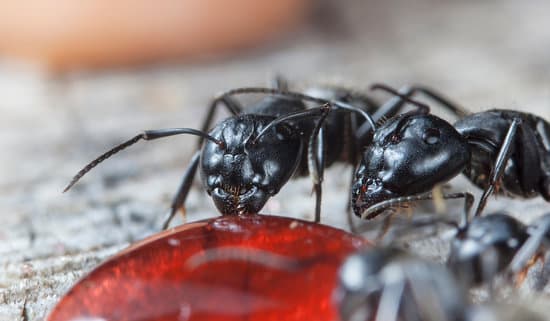
Flying ants, commonly categorized as winged reproductive ants, intrigue many who observe them during swarming events, often mistaken for a mere nuisance. The phenomenon captivates local and international observers, stirring curiosity about which species possesses these wings and the significant roles they assume within their colonies. This article aims to elucidate the characteristics of flying ants, their lifecycle, and some surprising facts about them.
To dispel common misconceptions, not all ants exhibit wings. The winged variants are primarily reproductive individuals: the queens and males. These winged ants emerge during specific climatic conditions, particularly in the late summer to early autumn months, an event aptly termed “nuptial flight.” This flight serves as a critical reproductive mechanism for ant colonies, ensuring genetic diversity and the establishment of new colonies.
Among the most conspicuous groups of flying ants are members of the Formicidae family. Various species within this family display similar characteristics during their nuptial flights. Notable examples include the black garden ant (Lasius niger), the carpenter ant (Camponotus spp.), and the red imported fire ant (Solenopsis invicta). These species are characterized by their adaptable behaviors and resilience, contributing to their ubiquitous presence across diverse ecosystems.
Interestingly, the anticipation and sudden appearance of flying ants can be attributed to pheromonal cues produced by the colony queen. The pheromones signal to the workers that the time has arrived for the alates (winged ants) to emerge. This tightly synchronized event is not merely coincidental; it has evolved as a survival strategy to maximize the chances of successful mating while minimizing predation risks associated with the flight. Such biological strategies reflect the intricate dynamics within ant societies.
The appearance of flying ants is often linked to sudden changes in weather, particularly after a rainfall. The humidity and temperature create an optimal environment conducive to the nuptial flight. Males, which are typically smaller, will often leave the nest earlier than the larger queens, allowing them to congregate and await the mating event. This timely synchronization is a marvel of nature, showcasing the evolutionary adaptations of these social insects.
Once the nuptial flight concludes, the male ants notably have a fleeting existence. After mating, they succumb to a quick demise, no longer possessing the value of the colony. In contrast, the fertilized queens land, shed their wings, and seek suitable locations to establish new colonies. This wing shedding not only signifies their transition to a reproductive role but also duals as an act of energy conservation, ensuring they can focus on developing their offspring.
One of the most astounding aspects of flying ants is their capacity for long-distance movement. Some species, such as the black garden ant, can traverse considerable distances in search of mates and new nesting sites. This ability to disperse ensures genetic diversity among ant populations, which is integral for their adaptability in changing environments. It also allows for the establishment of multiple colonies, facilitating a more extensive network of ant communities.
Beyond their captivating lifecycle, certain flying ant species exhibit fascinating behavioral traits. For instance, some species display remarkable navigational abilities, utilizing the Earth’s magnetic field for orientation. Such capabilities enhance their survival and reproductive success, enabling colonies to thrive in diverse environments ranging from forests to urban settings.
Furthermore, the ecological significance of flying ants cannot be overstated. They play crucial roles in ecosystems, serving as both prey and predators. Winged ants contribute to the food web, offering nourishment to various birds and mammals while simultaneously acting as biological control agents, regulating populations of other insects. Their activities in soil aeration and nutrient recycling are also imperative for maintaining healthy ecosystems, showcasing their fundamental role in sustenance cycles.
The sociobiology of flying ants presents another layer of complexity. The hierarchical structure of ant colonies—led by one or more queens—offers insights into cooperation and organization within their social framework. Each member, from workers to alates, plays distinct roles that ensure the survival and prosperity of the colony. This multifaceted interaction is a cornerstone of ant society, revealing layers of communication through pheromones and tactile signals that govern their behavior.
In conclusion, flying ants, often viewed through the lens of a casual observer, embody a complex interplay of life strategies, ecological significance, and social behavior. Their winged forms serve as a fleeting symbol of reproduction and survival within a broader ecological narrative. By understanding these remarkable insects, we gain insight into the efficient workings of nature, providing a window into the intricate relationships that bind our ecosystems together. Such considerations remind us of the profound connections within the natural world, fostering a deeper appreciation for even the most commonplace of creatures.
